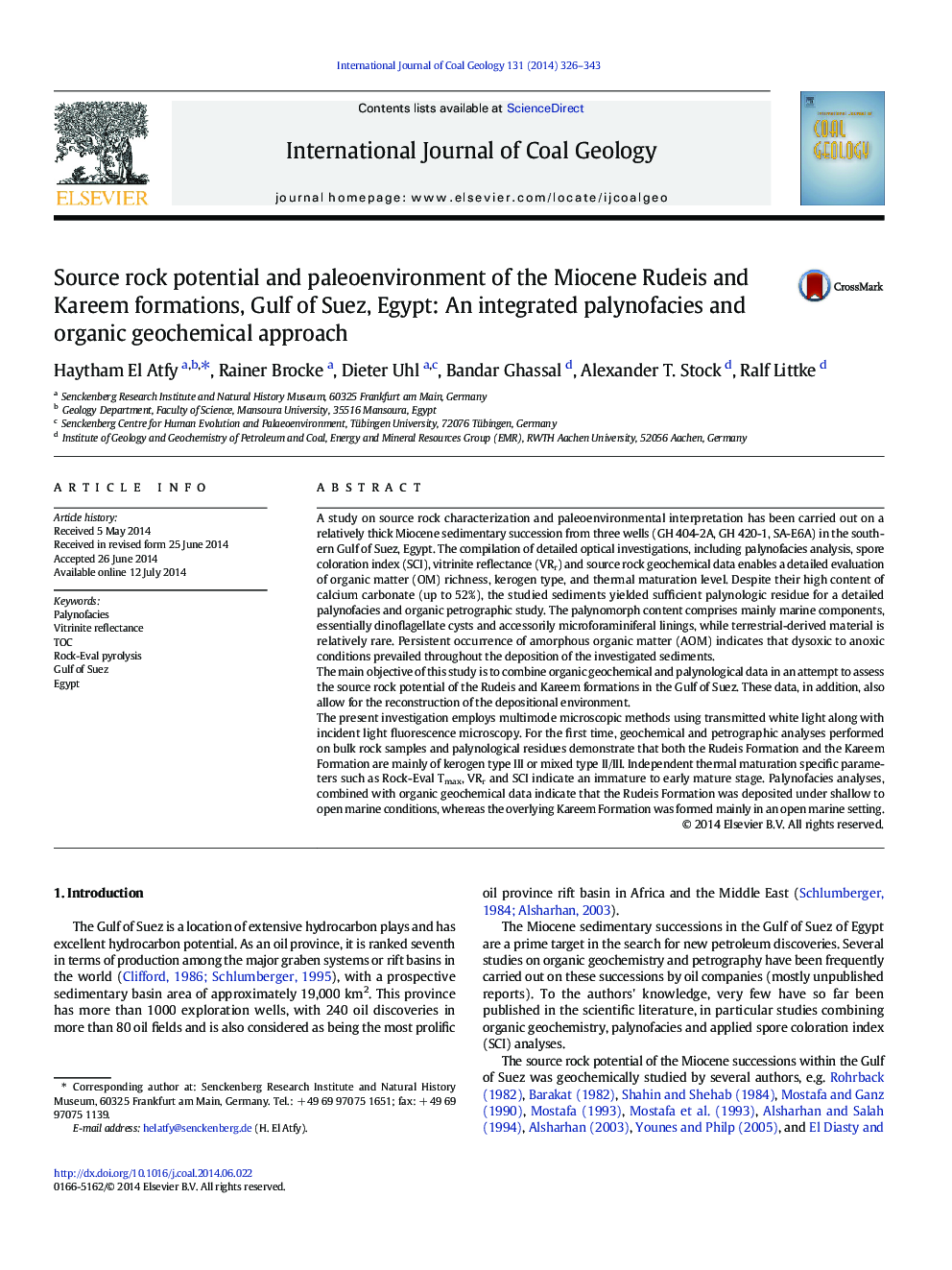| کد مقاله | کد نشریه | سال انتشار | مقاله انگلیسی | نسخه تمام متن |
|---|---|---|---|---|
| 1753032 | 1522566 | 2014 | 18 صفحه PDF | دانلود رایگان |
• A study on source rock characterization and paleoenvironmental interpretation has been carried out on the Miocene of the Gulf of Suez, Egypt.
• The compilation of detailed optical investigations, including palynofacies analysis, spore coloration index, vitrinite reflectance and source rock geochemical data enables a detailed evaluation of organic matter richness, kerogen type, and thermal maturation level.
• It is assumed that the Rudeis Formation was deposited under shallow to open marine conditions, whereas the Kareem Formation was formed mainly in an open marine setting.
A study on source rock characterization and paleoenvironmental interpretation has been carried out on a relatively thick Miocene sedimentary succession from three wells (GH 404-2A, GH 420-1, SA-E6A) in the southern Gulf of Suez, Egypt. The compilation of detailed optical investigations, including palynofacies analysis, spore coloration index (SCI), vitrinite reflectance (VRr) and source rock geochemical data enables a detailed evaluation of organic matter (OM) richness, kerogen type, and thermal maturation level. Despite their high content of calcium carbonate (up to 52%), the studied sediments yielded sufficient palynologic residue for a detailed palynofacies and organic petrographic study. The palynomorph content comprises mainly marine components, essentially dinoflagellate cysts and accessorily microforaminiferal linings, while terrestrial-derived material is relatively rare. Persistent occurrence of amorphous organic matter (AOM) indicates that dysoxic to anoxic conditions prevailed throughout the deposition of the investigated sediments.The main objective of this study is to combine organic geochemical and palynological data in an attempt to assess the source rock potential of the Rudeis and Kareem formations in the Gulf of Suez. These data, in addition, also allow for the reconstruction of the depositional environment.The present investigation employs multimode microscopic methods using transmitted white light along with incident light fluorescence microscopy. For the first time, geochemical and petrographic analyses performed on bulk rock samples and palynological residues demonstrate that both the Rudeis Formation and the Kareem Formation are mainly of kerogen type III or mixed type II/III. Independent thermal maturation specific parameters such as Rock-Eval Tmax, VRr and SCI indicate an immature to early mature stage. Palynofacies analyses, combined with organic geochemical data indicate that the Rudeis Formation was deposited under shallow to open marine conditions, whereas the overlying Kareem Formation was formed mainly in an open marine setting.
Journal: International Journal of Coal Geology - Volume 131, 1 September 2014, Pages 326–343
